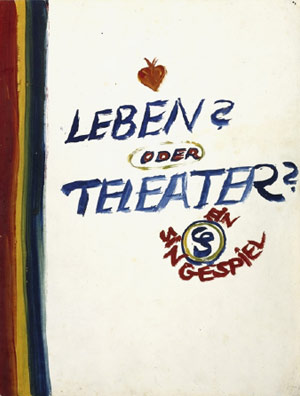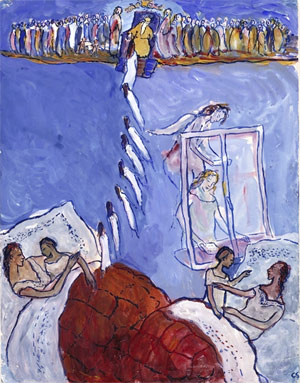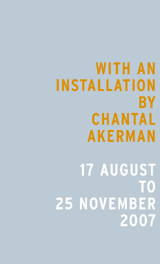"Life? or Theatre?": Prelude
First part of the picture cycle by Charlotte Salomon


- Pictures (top to bottom):
Title sheet of the Singespiel, from "Life? or Theatre?", sheet 4155-1
Franziska Kann tells her daughter Charlotte about heaven from "Life? or Theatre?" sheet 4175
All pictures from Charlotte Salomon, "Life? or Theatre?", 1940-1942
© (for all pictures) Charlotte Salomon Foundation, Amsterdam
Charlotte Salomon describes her cycle as a "Tricolor Singespiel". The Singespiel consists of pictures, music and texts.
Charlotte Salomon tells us her story in three parts, to which she assigns the colors blue, red and yellow. In the painted story of her family and life she calls herself "Charlotte Kann". Everyone in her real life also receives a new name in her Singespiel.
Blue: "Prelude"
The blue part of the cycle takes place in Berlin. It centers on the story of the family and Charlotte's childhood and teenage years. Charlotte Salmon painted the pictures about her childhood with many details. To the pictures she added long texts, written on tracing paper to be laid over the given picture.
Contents
The story begins before Charlotte Kann's birth with the suicide of her aunt, Charlotte Knarre (Charlotte Grunwald) in 1913. Charlotte is later named for this aunt.
A few years later, the surgeon Albert Kann (Albert Salomon) and the nurse Franziska Kann, née Knarre (Franziska Salomon, née Grunwald) are married. In 1917 Charlotte is born and grows up in an upper class household.
As Franziska Kann soon loses her pleasure in life, she tells her daughter that she would rather be "an angel" and live in Heaven. When Charlotte is eight years old, her mother takes her own life. But Charlotte is told that her mother died of influenza.
In 1930, Albert, who is by this time a professor at the university, marries the celebrated singer Paulinka Bimbam (Paula Lindberg), a woman of great charisma. Charlotte, too, adores her stepmother.
A catalog of the exhibition has been published.
When: 17 August to 25 November 2007,
daily from 10 to 8, Mondays to 10 (closed: 9/13+14, 9/22, 9/25, 11/17/2007)
Where: Jewish Museum Berlin, Lindenstrasse 9-14, 10969 Berlin
An exhibition of the Jewish Museum Berlin in collaboration with Joods Historisch Museum Amsterdam.


